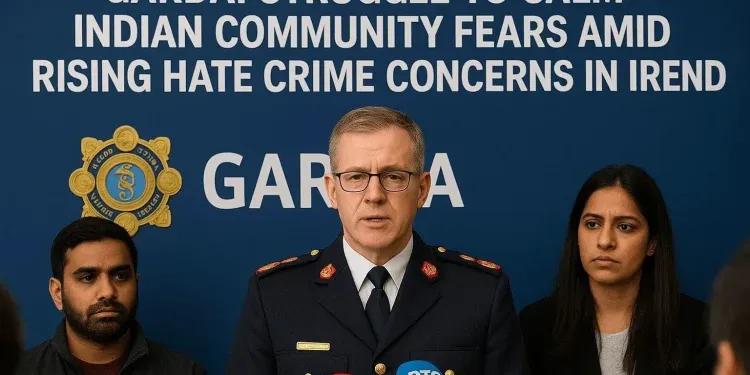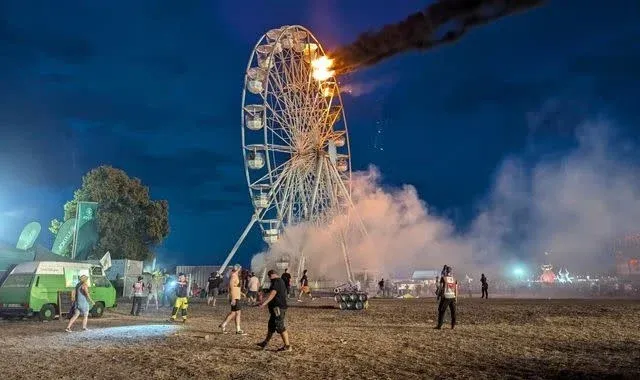DUBLIN – Gardaí are working to reassure Ireland’s Indian community following a string of high-profile assaults, even as their own data shows no clear evidence of a rising trend in violence targeting Indians.
The recent incidents, some seemingly random and unprovoked, have sparked fear among the approximately 80,000 Indian nationals living in Ireland. But according to Garda analysts, the statistics do not point to a significant increase in such crimes against Indians.
Data Limitations and Public Perception
Investigators faced an immediate challenge: Ireland’s crime recording systems do not easily capture the ethnicity of victims. Despite this, Gardaí reviewed available reports and found no statistical spike in violence against Indian nationals.
However, the headlines tell a different story. Indian media outlets have extensively covered the attacks, with emotive accounts and viral social media posts fuelling public concern.
One widely shared online letter, penned by “an Indian nurse in Ireland,” described an incident where a young Indian girl was surrounded and pushed by a group of Irish teenagers. “They were pushing her. Bullying and laughing. For no reason. Just because she looked different,” the letter read. “I helped her escape. They ran. And I stood there shaking, wondering… What kind of place is this becoming?”
Diplomatic Warnings Heighten Concern
The Indian Embassy in Dublin added to the heightened tension, issuing a statement advising Indian nationals to “take reasonable precautions for their personal security and avoid deserted areas, especially in odd hours.” It cited an increase in “instances of physical attacks” on Indian citizens.
Rise in Hate Crime Reports – But No Spike in Indian-Specific Targeting
While Gardaí acknowledge a general rise in hate-related offences in recent years, they stress this does not translate into evidence that Indians are being disproportionately targeted.
In 2024, there were 676 recorded hate crimes and related incidents in Ireland, and the figure appears set to increase this year. These offences range from verbal abuse to serious assaults, with some involving fabricated allegations that victims were a danger to women or children.
Garda sources emphasise they are not downplaying the seriousness of the recent attacks or denying that racism was a factor in some cases. Rather, they argue that Indian nationals have no more reason to feel unsafe now than they did a few months ago.
Delivering this message without appearing dismissive of community fears is proving difficult. “It’s a genuine and understandable fear,” one source said, “but the data does not support the idea of a sudden escalation.”
Legal and Prosecution Challenges
Efforts to hold perpetrators accountable face legal hurdles. New hate crime legislation introduced earlier this year allows for tougher sentences where hatred is the primary motive. However, Gardaí report that the Director of Public Prosecutions has applied a “high bar” for such designations, making convictions for hate-motivated offences harder to secure.
Government and Diplomatic Pressure
Ireland’s Government is concerned about the country’s international image. The issue has drawn diplomatic attention, with Ireland’s ambassador to India penning an op-ed insisting that the attacks “could not be further from the values Ireland holds dear.”
Prominent community leaders have also called for stronger action and better engagement between Gardaí and the Indian community.
Community Engagement and Event Cancellations
Gardaí have increased outreach to Indian community groups and had planned a visible presence at India Day celebrations to build trust and reassure residents. However, the flagship event in Farmleigh, Phoenix Park, was cancelled by organisers due to safety concerns.
The force’s twin objectives remain: to communicate that there is no evidence of a sudden rise in targeted attacks on Indians, and to urge any victims of assault or intimidation to report incidents so they can be treated seriously and investigated thoroughly.
As Gardaí work to balance statistical evidence with lived community experiences, the challenge lies not only in crime prevention but in restoring a sense of security to a community whose fears have gone global.







